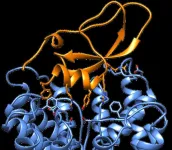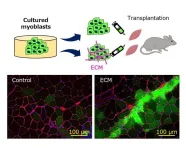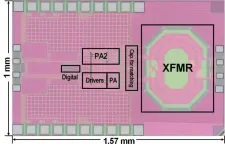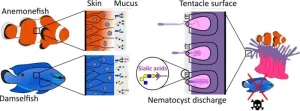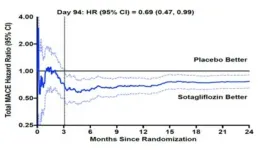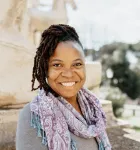(Press-News.org) ROCKVILLE, MD – When scientists develop new molecules—whether for the purposes of agriculture, species control, or life-savings drugs—it’s important to know exactly what its targets are. Thoroughly understanding a molecule's interactions, both intended and unintended, is crucial for ensuring its safety and efficacy.
A cone snail toxin known to affect both insects and fish inspired Weizmann Institute scientists to develop a new way of finding molecular targets. By combining artificial intelligence with traditional research methods, they created a pipeline that can predict which proteins natural toxins will affect, with implications for both ecological research and drug development. The work will be presented at the 69th Biophysical Society Annual Meeting, to be held February 15 - 19, 2025 in Los Angeles.
Izhar Karbat, PhD, and Eitan Reuveny, PhD, both scientists at the Weizmann Institute in Israel, wanted to figure out how the cone snail toxin, Conkunitzin-S1 (Cs1), impacts fish, a prey of cone snails. Cs1 is a toxin known to block potassium channels—essential gateways for cell function—and has a potent effect on fruit flies and other insects but, doesn’t impact mammals or other creatures like mollusks. However, exactly what its targets were in fish remained elusive.
“Three years ago, we tried our best tools at the time to find the target of the Conkunitzin toxin, and we failed because the tools were not good enough. And then came a big revolution in structural biology driven by artificial intelligence,” said Karbat. In their latest attempt, he and Reuveny used a two-pronged computational approach to identify the fish potassium channels most vulnerable to Cs1.
First, they used AlphaFold, a powerful AI program, to predict how the toxin might bind to different fish potassium channels. Then, they developed ET3, a new AI model that analyzes how water molecules move around these channels. ET3 was trained to identify irregularities in the movement of water molecules around the “selectivity filter”—the part of the channel that controls which ions can pass through. Blocking this filter essentially shuts down the channel.
By using ET3 to analyze a wide range of fish potassium channels, far beyond what would have been possible with previous methods, they were able to identify the specific channels that Cs1 targets and how it prevents them from functioning correctly. Basically, if potassium channels are like tiny doors that control the flow of ions in and out of cells, Cs1 acts like a lock that jams these doors shut.
“Using molecular dynamics and the new AI-driven structural tools we were able to find the small subset of channels in fish which bind our toxins with high affinity and are probably the real target of the cone snail,” said Karbat.
“This new pipeline offers exciting opportunities and future prospects with ecological studies, to study real chemical interactions in real ecological systems,” Karbat said. He added that it could also be used in drug development to identify targets based on a drug’s structure, or to identify potential off-target interactions.
As an example, Karbat said, “if you develop a drug that would activate a channel in the human brain, you wouldn’t want the same drug to affect a channel in the human heart and cause a heart attack.”
“The power of this pipeline is that we can concentrate on a target, or any molecule that we are interested in, and find its match,” said Reuveny.
Image Caption:
Cone snail toxin (Conkunitzin-S1, shown in orange) interacting with a fish potassium channel (shown in blue). Courtesy of Eitan Reuveny and Izhar Karbat.
###
The Biophysical Society, founded in 1958, is a professional, scientific Society established to lead development and dissemination of knowledge in biophysics. The Society promotes growth in this expanding field through its annual meeting, publications, and committee and outreach activities. Its 7,000 members are located throughout the United States and the world, where they teach and conduct research in colleges, universities, laboratories, government agencies, and industry.
END
Tokyo, Japan – Researchers from Tokyo Metropolitan University have developed a way to treat ageing-related muscular atrophy using regenerative medicine. Conventional methods to implant myoblasts, precursors to muscle fiber, required prior scarring for the new cells to graft properly. By adding extracellular matrix (ECM) fluid into the implant, the team successfully grafted myoblasts onto healthy muscle in mice. Their technique opens the way for using implantation to treat unscarred muscle atrophied by ageing.
Age-related muscular atrophy in skeletal muscle can have a devastating impact on people’s quality ...
Three innovative design techniques substantially enhance wireless transmitter performance and can boost power efficiency and elevate data rates concurrently, as reported by the researchers from Science Tokyo, Japan. This effectively aligns with the growing demand for speed and efficiency, accelerating the widespread deployment of wireless devices. This enables synergistic operation of wireless electronic devices and better quality of modern life.
Background:
Integrating artificial intelligence (AI) into everyday life requires the interconnectedness of all electronic devices via a technology called the Internet of Things (IoT). The rapid expansion of the IoT market has ...
The clownfish-anemone living arrangement is one of the most widely recognized examples of symbiosis. Researchers have made a breakthrough in understanding how anemonefish can live safely among sea anemones without being stung by their venomous tentacles, solving a century-long mystery.
Scientists at the Okinawa Institute of Science and Technology (OIST) and their international collaborators have discovered that anemonefish have evolved to maintain very low levels of sialic acid in their skin mucus to avoid triggering the release of nematocysts (stinging cells) in ...
Sotagliflozin, a drug recently approved by the Food and Drug Administration to treat type 2 diabetes and kidney disease with additional cardiovascular risk factors, can significantly reduce heart attack and stroke among these patients, according to results from an international clinical trial led by a Mount Sinai researcher.
Sotagliflozin is a sodium-glucose cotransporter (SGLT) inhibitor. It blocks the function of two proteins, known as SGLT1 and SGLT2, which move glucose and sodium across cell membranes and help control blood sugar levels. Other SGLT2 inhibitors do not as significantly block SGLT1.
The study, published ...
PROVIDENCE, R.I. [Brown University] — Scientists discovered years ago that the hypothalamus — which helps to manage body temperature, hunger, sex drive, sleep and more — includes neurons that express the protein opsin 3 (OPN3). Far less clear, however, was what this light-sensing protein does so deep inside the brain.
A study published in PNAS suggests that OPN3 plays an important role in regulating food consumption.
“Our results uncover a mechanism by which the nonvisual opsin ...
New blood test could improve Alzheimer’s Disease diagnosis, research finds
Up to half of all people living with Alzheimer’s Disease in Ireland remain undiagnosed. Now, a new blood test may have the potential to transform patient care, allowing for better diagnosis, earlier interventions and more targeted treatments.
Researchers at Trinity College Dublin, the Tallaght Institute of Memory and Cognition and St James’s Hospital, Dublin are exploring the ability of a new blood test, plasma p-tau217, to detect Alzheimer’s Disease (AD). This test could potentially replace the current diagnostic method, a lumbar puncture/spinal tap (which ...
Cal Poly Assistant Professor Joni Roberts has been chosen, with two additional university faculty members, as the first Cal Poly Faculty Excellence Award honorees.
The inaugural Faculty Excellence Award — an honor recognizing outstanding contributions in teaching, research and service — is administered by the Office of the Provost and funded by generous donor contributions. The award reflects Cal Poly’s commitment to academic excellence and its Learn by Doing philosophy.
The ...
A new Colorado State University study of the interior U.S. West has found that tree ranges are generally contracting in response to climate change but not expanding into cooler, wetter climates – suggesting that forests are not regenerating fast enough to keep pace with climate change, wildfire, insects and disease.
As the climate becomes too warm for trees in certain places, tree ranges have been expected to shift toward more ideal conditions. The study analyzed national forest inventory data for more than 25,000 plots in ...
From punch card-operated looms in the 1800s to modern cellphones, if an object has an “on” and an “off” state, it can be used to store information.
In a computer laptop, the binary ones and zeroes are transistors either running at low or high voltage. On a compact disc, the one is a spot where a tiny indented “pit” turns to a flat “land” or vice versa, while a zero is when there’s no change.
Historically, the size of the object making the “ones” and “zeroes” has put a limit on the size of the storage device. But now, University of Chicago Pritzker School of Molecular ...
RIVERSIDE, Calif. -- In a paper published earlier this month in Physical Review Letters, a team of physicists led by Jonathan Richardson of the University of California, Riverside, showcases how new optical technology can extend the detection range of gravitational-wave observatories such as the Laser Interferometer Gravitational-Wave Observatory, or LIGO, and pave the way for future observatories.
Since 2015, observatories like LIGO have opened a new window on the universe. Plans for future upgrades to the 4-kilometer LIGO detectors and the construction of a next-generation 40-kilometer observatory, Cosmic Explorer, aim to push the gravitational-wave ...
